Bringing home the bears - An insight into the fascinating history of Free the Bears
24/05/2017 in RZSS
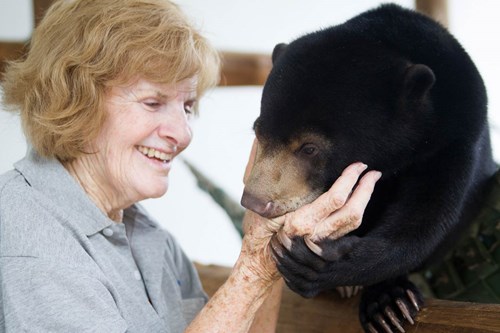
*Above: Mary with Maggie, a rescued sun bear cub - Photo by Free the Bears
Free the Bears started as a petition group, set up by British-born grandmother Mary Hutton back in 1993, to protest against the inhumane treatment of bears in bile farms. After two years of collecting signatures outside her local shopping centre, Mary presented more than 50,000 signatures to the Chinese embassy in Canberra, Australia. And someone asked her what she was going to do next…
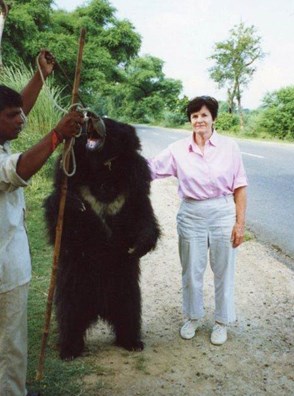
It wasn’t until a few years later that the answer came somewhat out of the blue. Up until this point, Mary’s focus had been on the plight of Moon bears across Asia, but suddenly she was asked to help find a good home for a trio of Sun bears that had been rescued from restaurants and markets in Cambodia. In those pre-internet days and with a background as a secretary and child-minder, Mary would be the first to admit to not knowing much about the world’s most cryptic bear species but she set about phoning every zoo in Australia until she got the answer she was looking for. If she was able to arrange the paperwork and cover the transportation costs, Taronga Zoo in Sydney would offer a home for the three bears. This offer was perhaps never expected to be taken up, but clearly Mary is not your average grandmother, and she set about single-handedly arranging for the first ever legal export of an endangered species from Cambodia to Australia. Photo right: Mary was a big driver behind the campaign to stop dancing bears in India.
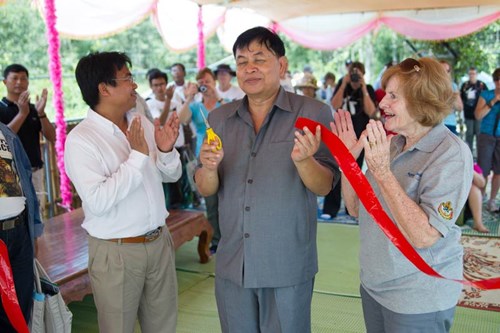
*Above: Mary celebrating the 15th anniversary of the Cambodian Bear Sanctuary - Photo by Free the Bears
The fanfare surrounding the bears’ arrival in Sydney led to a huge amount of interest in the plight of the Sun bear. With donations coming in from around the world, Free the Bears set about building a permanent sanctuary for rescued bears within the Phnom Tamao Wildlife Rescue Centre, Cambodia’s premiere zoological centre. Over the past 20 years, almost 200 Sun bears and Moon bears have been rescued from markets, restaurants and poachers’ houses by government authorities and bought to the sanctuary for care. Today, the Cambodian Bear Sanctuary is home to the worlds’ biggest group of rescued Sun bears – housing more individuals of this species than all of the zoos in Europe and North America combined. In the wild, Sun bears lead almost entirely solitary lives and so, whilst most of the bears at the sanctuary learn to enjoy the company of others, a small minority struggle with assimilation into social groups. These bears are sent to join international breeding programmes aimed at creating an insurance population for their species. Rotana and Somnang were two such individuals – happy in each other’s company but hostile towards anyone else joining their group. In June 2010 they were selected to join the European sun bears breeding programme, and travelled to their new home in RZSS Edinburgh Zoo.
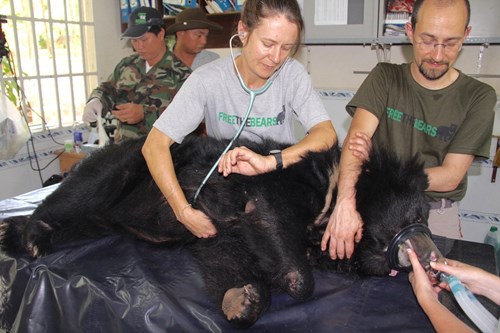
*Above: RZSS Veterinary Surgeon Romain Pizzi on a recent trip capacity building with the Free the Bears teams - Photo by Free the Bears
Unfortunately, I would love to report after decades working with bears across Asia that they no longer need our help, however an average of one new bear continues to be rescued from the illegal wildlife trade in Cambodia each month. There is a clear need for specialist veterinary care to tackle a range of issues including snare wounds, zoonotic disease and care of orphaned cubs. Since 2010, RZSS has supported the work of Free the Bears through the provision of funding and technical support to build the capacity of local veterinary teams at Free the Bears sanctuaries in Cambodia, Laos and Vietnam. Early visits involved training in relatively simple skills such as gas anaesthesia or sterilization of surgical kits, whilst over the years a number of ground-breaking surgeries including the world’s first laparoscopic (keyhole) surgery to remove the damaged gallbladders of former bile farm bears has helped advance the treatment we are able to offer to these animals that have often suffered so much before their arrival at our sanctuaries.
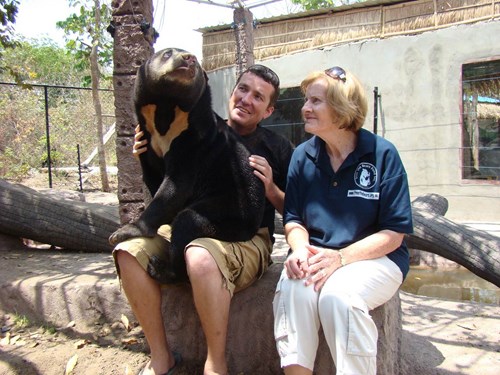
*Above: Sun bear Dilli with Matt and Mary - Photo by Free the Bears
Whilst Cambodia has never allowed bear bile farms to become established, its wild bear populations have undoubtedly been poached and illegally trafficked over the border to feed into bile farms in China, Vietnam and Laos. At the World Conservation Congress in 2012, a resolution was passed calling for the closure of illegal bear bile farms and an IUCN-supported situation analysis into the impact of the trade in bear bile on wild populations of bears across Asia. Vietnam is already making good progress in closing its bear bile farming industry, with the number of bears held in farms declining from almost 5,000 ten years ago to around 1,000 animals today. Laos, seeing the potential damage that allowing bear bile farming could have on its own wild populations, is also working with Free the Bears to close all farms and bring up to 200 bears into the safety of sanctuaries. The next few years will be critical for both of these countries, as efforts to rescue the bears still incarcerated in farms are stepped up and a growing number of battered and bruised bruins arrive at our sanctuaries in need of urgent veterinary care. Free the Bears is incredibly grateful to RZSS for the support that has been extended to our work over the past seven years and looks forward to sharing future successes as we move towards a future where the practice of bear bile farming is relegated to the books of history.
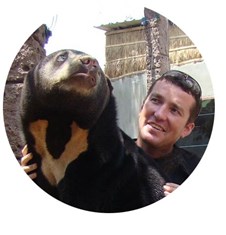
Matt Hunt
CEO Free the Bears
www.freethebears.org
*All photos courtesy of Free the Bears


























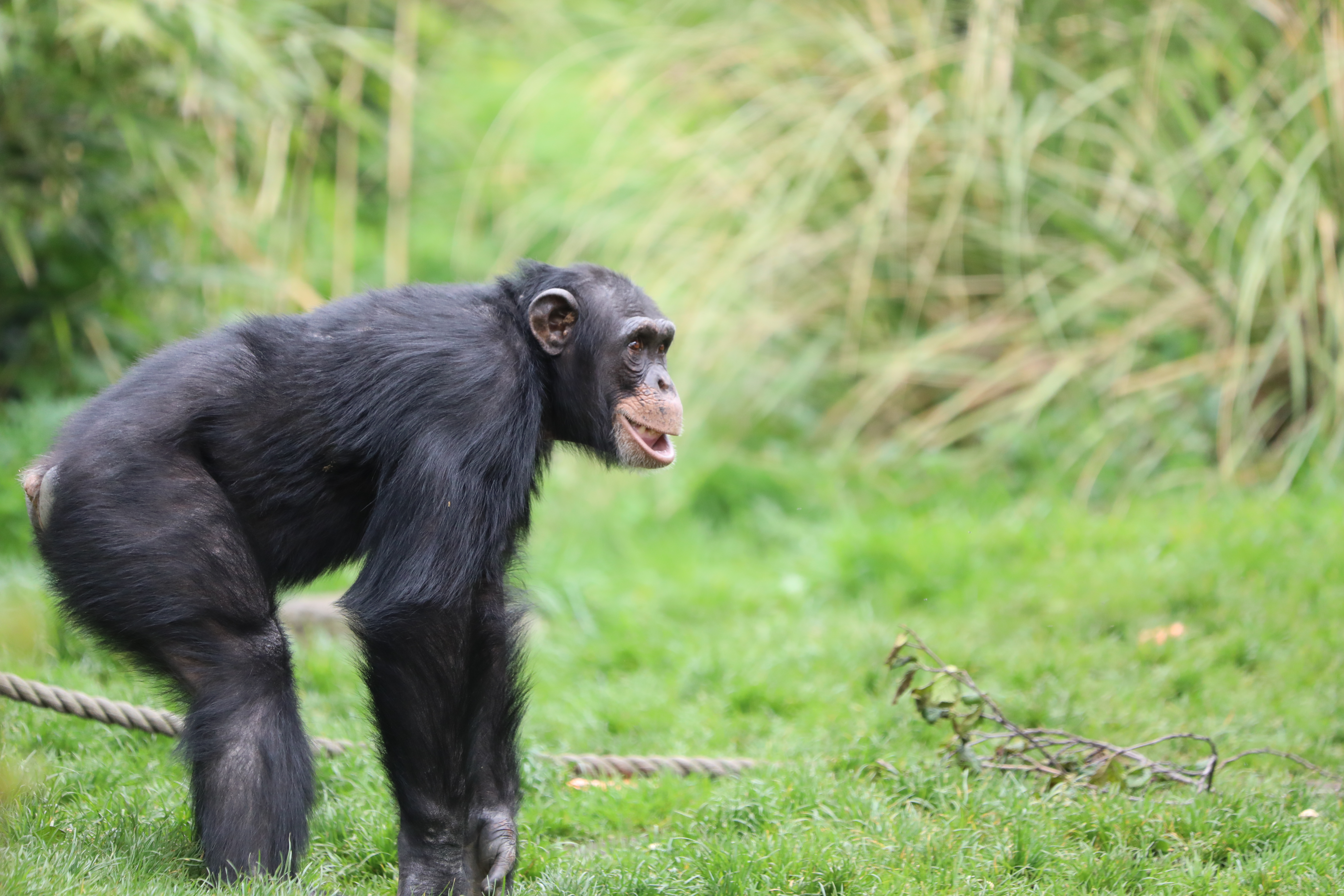
Follow EZ